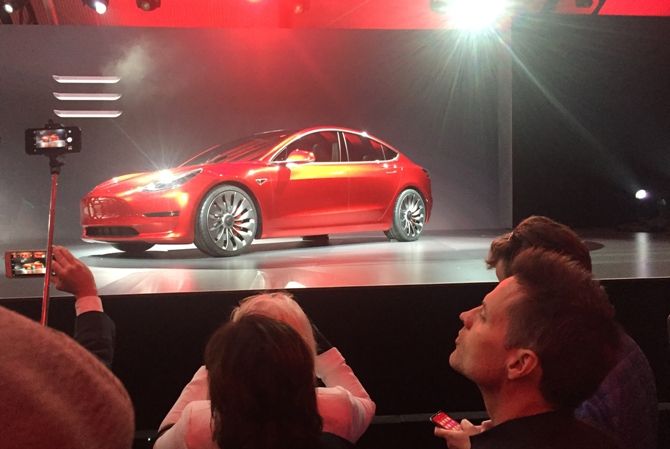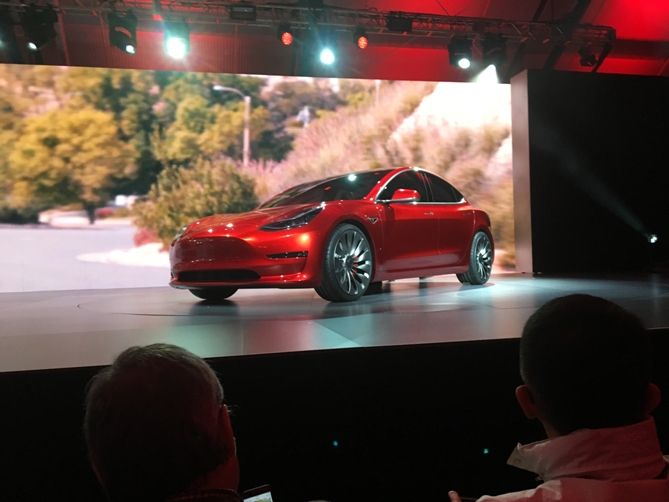
The '3' is a five-seat sedan with luxury fittings and high-end features such as Autopilot (it can drive itself on highways).
The astonishing response to the Tesla Model 3 makes it clear that drivers are open to the concept of all-electric cars.
The vehicle will not be available until end-2017, or later.
The base price of $35,000 (or Rs 23.29 lakh at the current exchange rate) puts it in the same category as the Mercedes C-Class, or the Audi A6.
But despite the long timeframe and the substantial price tag, over 276,000 orders were booked in the first three days.

This is also the luxury car-maker's first serious bid to break into the Third World. The “3” will be available in India, South Africa and Brazil.
The price has been halved, compared to the Model S, which sells for over $70,000 in the US.
The “3” is a five-seat sedan with luxury fittings and high-end features such as Autopilot (it can drive itself on highways).
It claims about 345 km range on full charge and impressive acceleration of 0-96 km in six seconds flat.
It will cost much more in India, given import duties at 125 per cent, unless concessional rates are offered for electric vehicles.
Such concessions are actually likely, given the government's commitment to going green.

In fact, Power, Coal, New and Renewable Energy Minister Piyush Goyal recently said that India could target being “a 100 per cent electric vehicle nation” by 2030.
Tesla is also a pioneer in energy storage.
Tesla's battery technologies could find multiple applications.
The so-called Powerwall and Powerpack can harness solar energy from panels for long-term backup and daily use.
There is speculation that the company might look to locate a battery “Gigafactory” in India.
Many other electric cars and hybrids (which use both fossil fuels and electricity) are in production already or are in various stages of design.
As more manufacturers enter the electric/ hybrid space, prices will reduce and technology will improve.
However, while consumers are clearly ready to go electric, the ecosystem is rudimentary in most places outside Southern California. Charging, for example, is cumbersome; it takes hours from a standard wall connection.
Tesla's revolutionary Supercharger Connectors shorten charging to an average of 40 minutes, which is still a lot longer than it takes to fill a sports utility vehicle's diesel tank.
Nor is there a global network of "charge pumps", and there aren't standardised tariffs for charging either.
The market can certainly take care of most of these challenges.
The charging networks will likely develop as electric vehicles become popular.
But early adopters may have to resort to carrying an extra battery set in the trunk on long commutes.
It would also be wrong to assume that an electric vehicle is automatically good for the environment.
It depends on the energy mix used in generating power.
That varies from nation to nation.
India for example, generates about 70 per cent of its electricity from thermal coal, which has a larger carbon footprint than petroleum or natural gas.
So an electric vehicle may actually be worse for the environment in India.
However, the power industry has incentive to go green and indeed, the charge networks of the future are likely to be green.
Despite all these caveats, the Model 3 could be a game changer.
If the demand for electric vehicles is this strong, every auto major will get on board.
That should lead to a rapid development of electric car technologies and the associated ecosystems with all the benefits that scale can generate.












 © 2025
© 2025